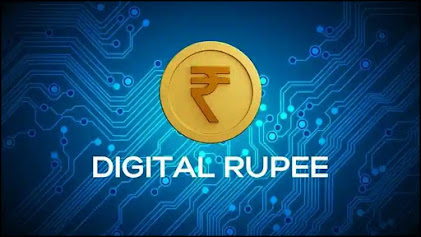Digital Rupee is the future of money
Digital Rupee is the future of money
The digital rupee rollout is a big step ahead in India’s digital transformation. It will be an excellent opportunity for India since it will potentially increase the ease of doing business, as well as improve resilience and security of the entire payments infrastructure.
Central bank digital currency (CBDC) – a new digital form of money issued by central banks – may just be the new infrastructure we need for ushering in more trust, resilience, and efficiency.
The money will be in virtual form just like other cryptocurrencies but the digital rupee will not be decentralized, but will be regulated by RBI. The digital rupee will be completely legal and acceptable by the Indian Government
2) Ease of use
Every unit of CBDC can be uniquely identifiable and traceable. Secondly, it could be made programmable i.e., there is potential to add multiple dimensions like prescribed end uses, time limit and transferability. Finally, CBDC is recorded on blockchain-powered distributed ledgers which allows all participants / banks to record the transactions and balances.
3) Global acceptance
There will be no longer geographical limits with the internationalization of current and financial account transactions. “A Digital Rupee that can be held by non-residents and is available to conduct cross-border financial transactions seems a natural extension to enable new retail payment possibilities and business ventures."
4) Transparency
“The launch of Digital Rupee in India is expected to usher in more efficiency, transparency, systemic resilience and governance in our currency management system."
5) No bank account needed like that for UPI
The major advantages of the move is that one doesn't even have to open a bank account in order to transact.
6) The payment via digital currency or rupee will be real-time
Once the digital rupee is launched the Government can easily access all transactions within authorised networks, enable real-time account settlements and ledger maintenance.
7) Likely to save operational costs of printing, distributing and storing banknotes
Digitised currency will minimise the costs involved in printing, distribution and logistics management of cash.
“Not only will the rollout reduce the dependency on cash, it will forever remain mobile unlike currency notes."
“India’s 17% cash propensity, the ratio of cash withdrawn to GDP, is higher than those of the Nordic countries, such as UK and Australia. Moving to digital payments and digital currency could reduce dependency on cash."
8) Governments can access all transactions happening within the authorised networks
The adoption of the digital rupee is also likely to play a pivotal role in enabling easy monitoring of Direct Benefit Transfers (DBT), making them relatively faster and reducing malpractices in the payment system. Increasing the efficiency of digital transactions will surely add another dimension to digital governance.
9) Cannot get physically damaged or lost
The benefit of digital currency is that they do not get torn, burnt or physically damaged. Neither can they be physically lost. “The lifeline of a digital currency will be indefinite compared to physical notes."
10) Fraud
The Digital Rupee can help prevent fraud.The current system relies on post-facto checks to prevent fraud, CBDC could address this proactively with embedded programmability and regulated traceability.



Comments
Post a Comment